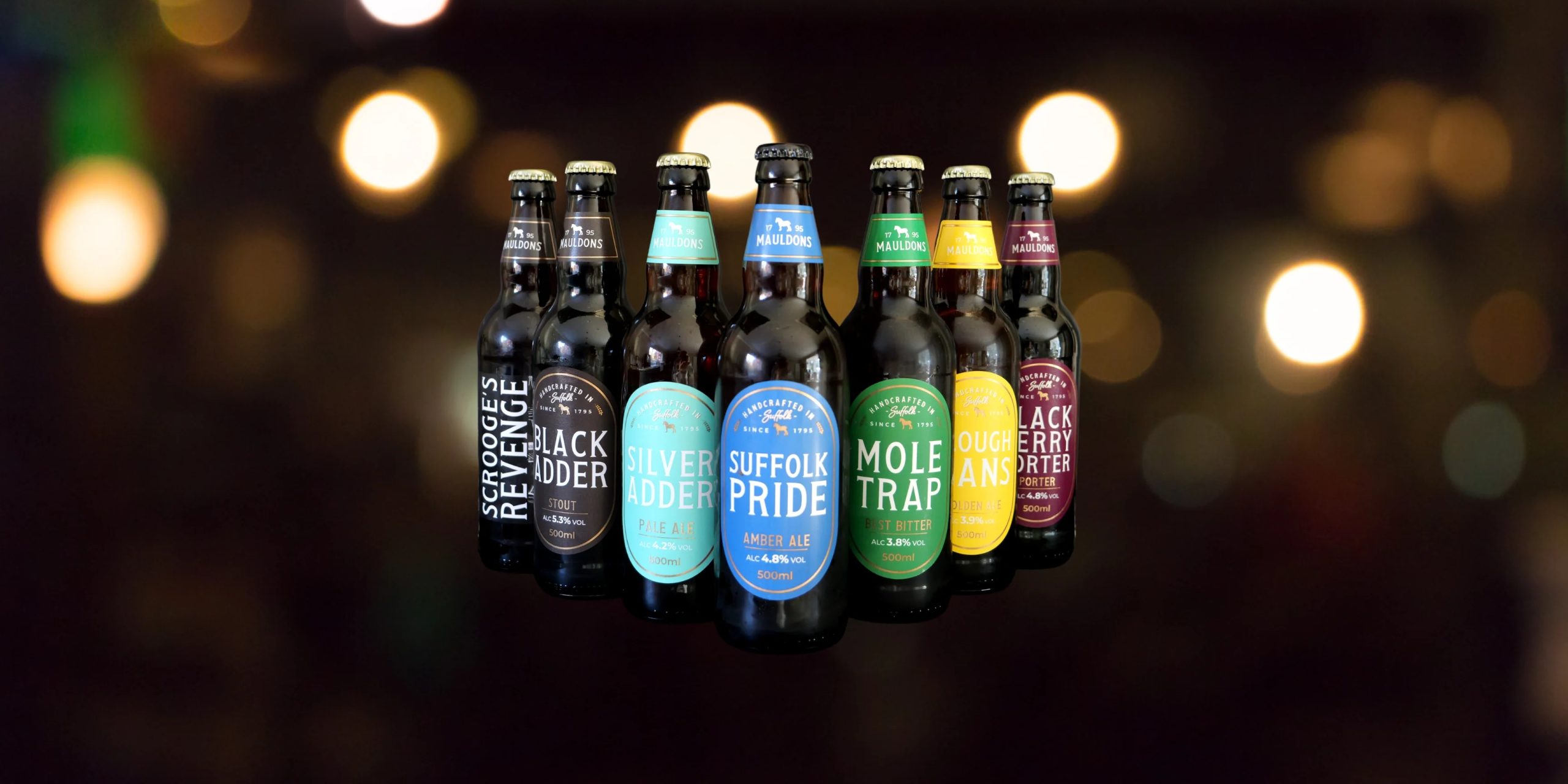Introduction
Shelf space is a premium in the alcoholic beverage world. Nobody knows how much a bottle’s label can make or break a sale. A dynamic market demands keeping up with alcohol label trends, but what drives those trends – and how do they shape the industry?
Recent developments in alcohol labelling are centred around minimalist designs and eco-conscious packaging. How are these developments in design and marketing changing how we drink our tipple?
If you like the art of marketing and consumer psychology then this article is for you.
From the origins of alcohol labelling to its current historical evolution – this journey reveals fundamental design principles and artistic movements behind today’s trends.
History of Alcohol Label Design: Decoding the Classic Traditional Label Elements
Alcohol labels are artistic expressions of skill developed over centuries.
Usually, old-world wine labels – like those from France – include the producer name, location, alcohol content and vintage year. The labels often feature fine calligraphy, embossed details and/or vintage motifs representing the winery. Similar elements appear on traditional whisky labels from Scotland.
Historically the classic label design also targeted trust. Genuineness and quality indicators like royal warrants, medals, and certifications added credibility to the alcohol. Ostentatious though it might be, detailed gold foiling and ornate imagery were often used elements that made the label attractive to drinkers then.
A traditional example would be Guinness Beer. Their harp logo, Arthur Guinness signature and trade mark text are historical references utilising the classic label elements.
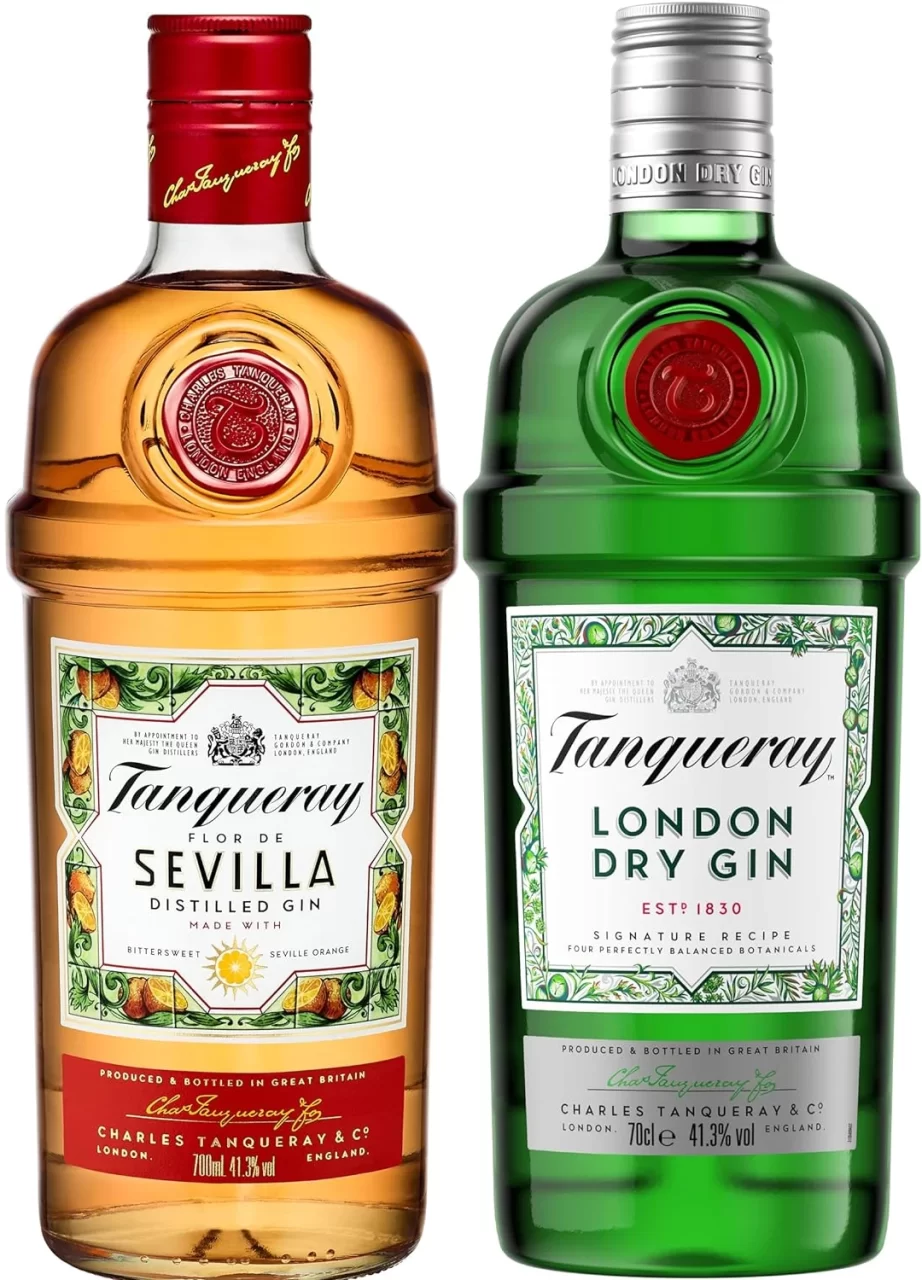
The Era of Minimalism and Modernism
Fast forward to the mid-20th century and alcohol label design underwent a radical transformation under minimalism and modernism. The emphasis went away from tradition and heritage and into a cleaner, bolder look with strong simple typography and minimal graphics.
This era focused on communicating the key point clearly and succinctly. Blocks of solid colour, bold typography and restrained design elements set the scene for a stark contrast to earlier ornate labels. Clearly there was a growing move towards brand identity from a historical background.
A good modernist design example is seen in Tanqueray Gin’s distinctive green bottle with simple white label text. The label is relatively minimalist and clean – a departure from more traditional, detailed labels in an already crowded alcohol market. Moving from traditional to modernist label design demonstrates that these transitions were largely driven by shifts in societal values and consumer preferences. This evolution demonstrates how consumer psychology influences alcohol label design.
Role of Branding in Alcohol Label Trends
Branding influences alcohol label trends. It is more than just slapping on a logo. Instead, it involves developing a consistent and impactful visual identity that communicates a brand story to the intended audience. Typography, colour and design are chosen elements that build a brand language.
Crafting a Visual Identity
In our experience as design specialists, we think the creative cornerstone of a brand’s label is its visual identity – its personality and values. So a heritage beer brand might use rustic, old-world typography to show its heritage and quality. Or an innovative craft gin brand might opt for modern, eccentric designs to show its artisanal quality.
Colours selected for the label may be selected not just to please the eye but also to influence consumer perceptions. Colours are also associated with certain emotions and concepts in this collaborative study. For instance, green may signify eco-friendliness or a newness to a consumer whereas deep red may suggest richness and intensity.
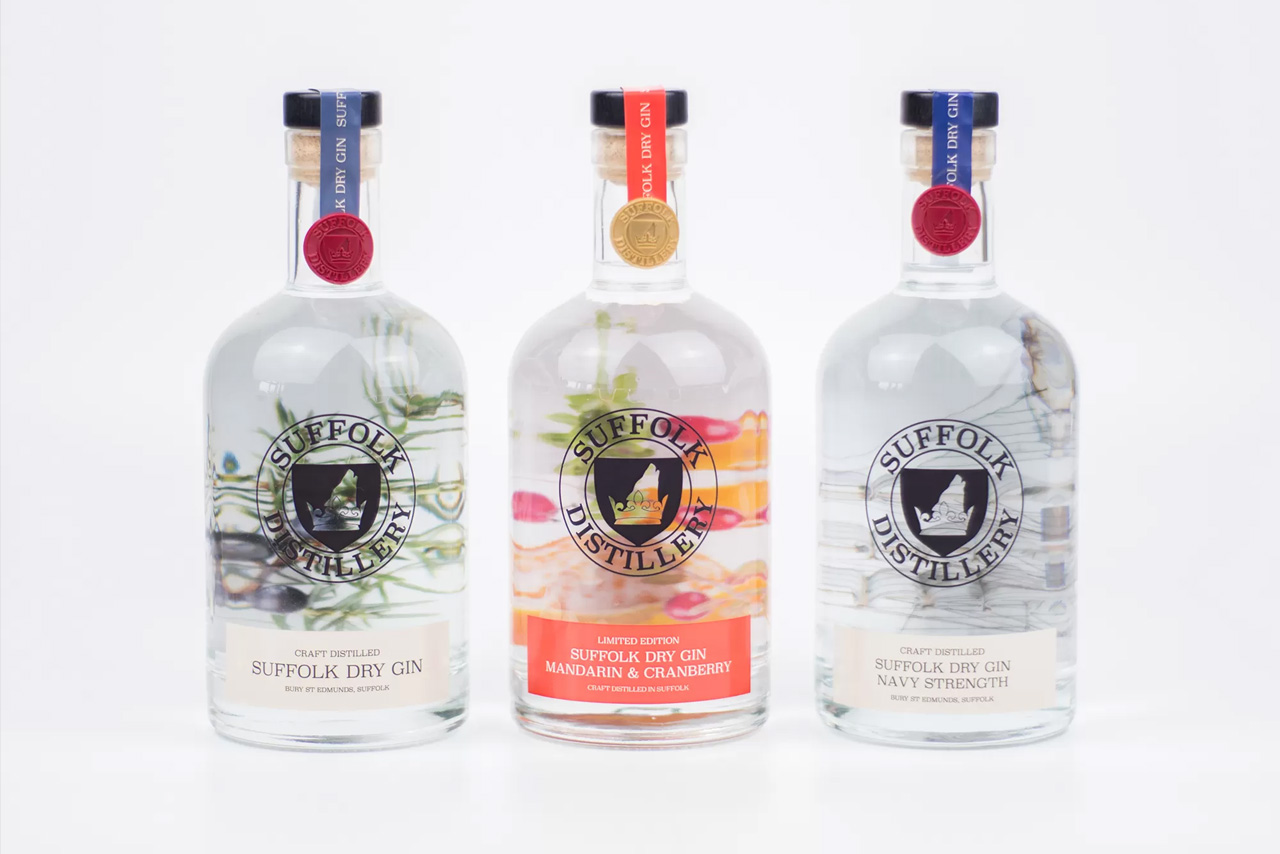
Labels Tell a Brand Story
A compelling label is more than pretty to look at: it feels good too. It tells the story of a brand’s mission. This narrative helps the brand connect with consumers and stand out on busy store shelves. Quite literally, the label says a lot about what’s inside the bottle and about what the brand stands for.
Take Brewdog, a UK craft beer brand. It uses outrageous labels to say “We are not normal.” It makes them stand out and it creates an allure for their wild and bold beers as well.
Alcohol brands compete in a crowded market but set trends by creating a memorable visual identity and a compelling brand story through their labels. Such a designed, impactful label is therefore a powerful branding tool in the crowded beverage market.
Current Alcohol Label Trends
Continuing from the historical evolution of alcohol label design and its influence on consumer behaviour, we look here at the drivers behind current trends in alcohol labelling.
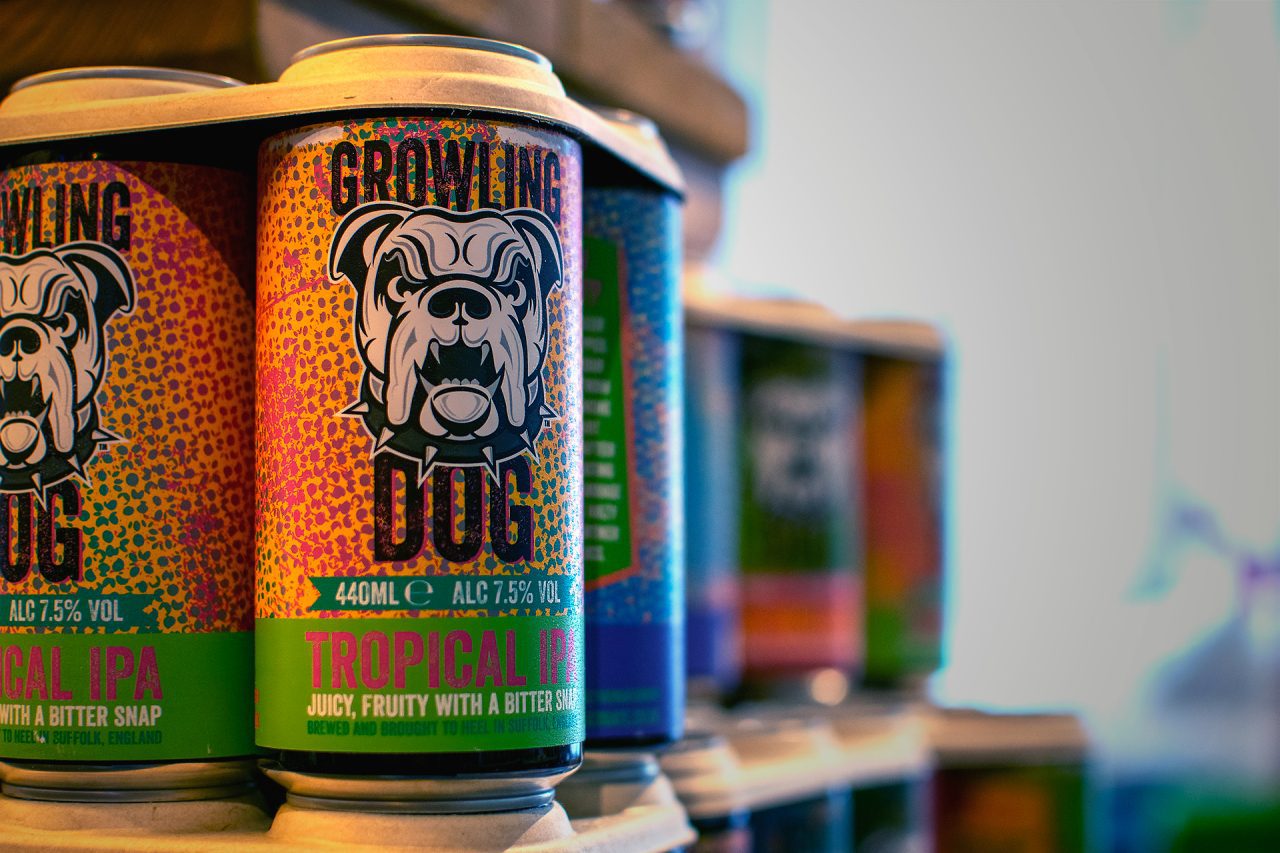
Embracing Bold Typography
Today, bold typography rules alcohol label designs. Brands know how exaggerated fonts and big lettering grabs consumer attention. Look at how a boldly printed label makes the brand name stand out – it’s easy to see, hard to lose and instantly associates the brand with the consumer’s consciousness. Companies like Johnnie Walker or Jim Beam use this technique to imprint their names in customer’s minds.
Experimenting with Abstract Art
A second trend is sending out the brand narrative in less traditional ways. With its unlimited forms and interpretations, abstract art is a way of expressing brand values. An abstract wine label for example might not specify the grape variety or origin but may invoke strong associations with the brand – luxurious, fun or mysterious to name a few. Labels for Opus One Winery use abstract design to connect with the consumer.
Eco-Friendly and Sustainable Packaging
On the topic of meaningful brand connections – don’t forget sustainability! With increased consumer eco-consciousness comes eco-friendly and sustainable packaging. Brands want to capitalise and make a statement of compliance with global sustainability goals. Label designs help companies like Patagonia Provisions tie their sustainable philosophy to their brand in search of market share.
Impact of Technology on Alcohol Labelling
This synergy between technological advances and label design has given an innovative dimension to the alcoholic beverage industry.
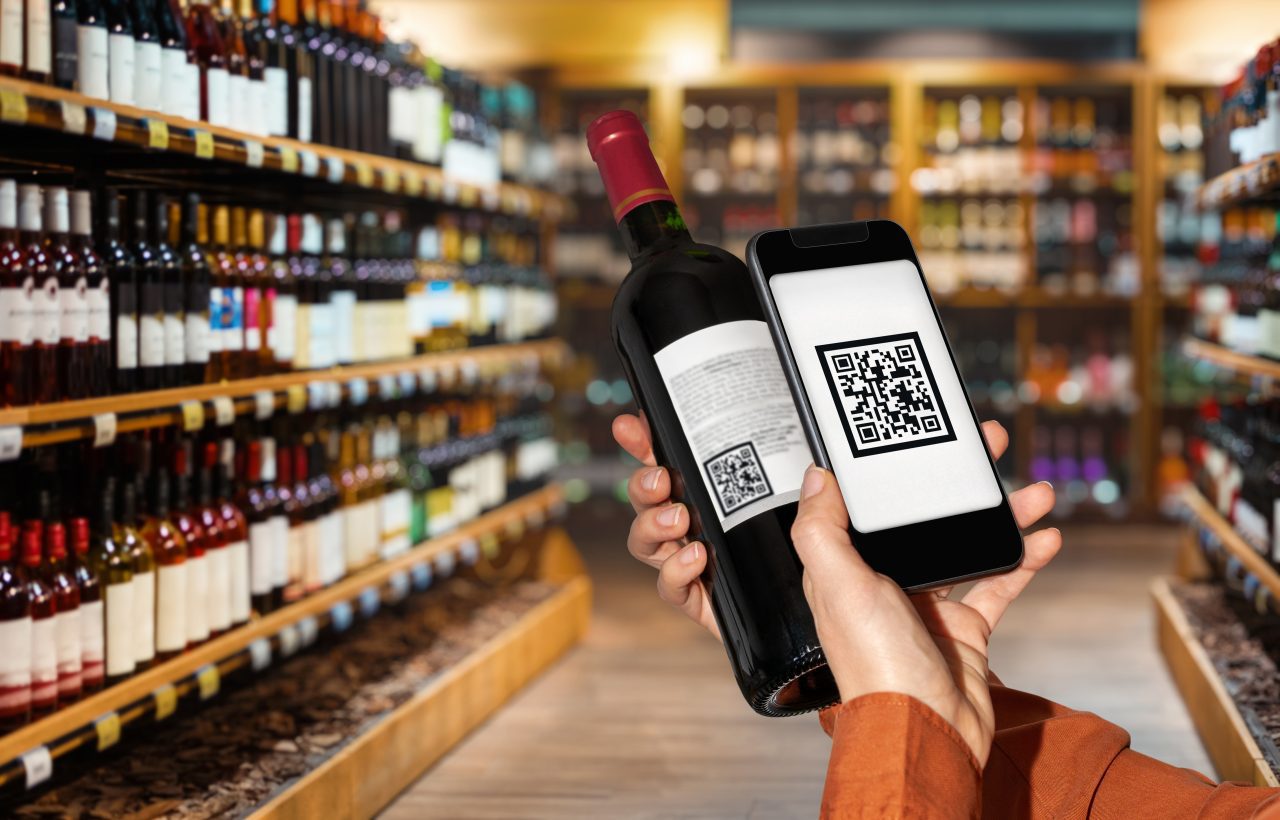
Smart Labels/Interactive Experiences
Brands are using QR codes for easier access to information about the product.These tiny, tech-savvy symbols open doors to descriptions like origin, ingredients and alcohol content. Mobile technology powers them to create an interactive experience that differentiates brands in this competitive space. With smart labels, Campo Viejo puts its brand story and wine tour experience at the fingertips of consumers.
The Rise of Augmented Reality in Alcohol Marketing
Augmented Reality is another tool that is changing alcohol marketing and labelling forever. The movie illustrates a world where technology meets creativity. AR projects visual, auditory, haptic or other sensory inputs onto real-world environments to enhance the consumer interaction with the product. AR-powered labels make brand storytelling more than a futuristic dream.
Brands like 19 Crimes, which have a rebellious spirit, are embedding AR in their labels to make them interactive storytellers. They have labels with stories about each wine’s inspiration. Such a groundbreaking move opens up a new and exciting world of alcoholic beverages, attracts digitally savvy consumers and builds brand loyalty.
Ultimately, technology enables alcohol brands to move beyond the labelling line and create new pathways for telling compelling brand narratives and engaging consumer experiences.
Regional Differences in Alcohol Label Trends
Different regions worldwide have their own trends for alcohol label design. Geographies, cultural practices and historical influences shape design elements.
Tasting the Terroir: How Location Influences Design
Considering the location when designing alcohol labels has become important. Winemakers for example often talk about their product’s terroir – the environmental conditions – soil and climate – under which the grapes are grown. The terroir plays such an important role in the wine’s taste and character that it often forms part of its story on the label.
You can take for example bottles from Burgundy in France. Many labels feature calligraphy and traditional crests as these reflect the region’s historical legacy.
Contrast this with the New World which includes countries such as Australia and the USA where wine labels are more creative and often use bold, colourful designs and quirky illustrations reflecting the region’s modern approach to winemaking.
Label Aesthetics: Cultural Influences
Cultural nuances also determine regional label design trends. As an example in Japan, where sake is a native rice wine, labels tend to have clean, minimalistic looks based on Japanese design.
Kyoto-based sake brewer Gekkeikan uses a clean, minimal design with Japanese characters and muted colours to give customers a taste of the Japanese aesthetic of their sake.
But in Mexico, Tequila bottles are often colourful with elaborate designs – symbols of the country’s festivals and indigenous culture. One example is Clase Azul’s hand-painted ceramic Tequila bottles that mix traditional Mexican design elements with contemporary aesthetics.
Geographic and cultural regional peculiarities are indispensable to alcohol label trends – creating individual, global identities for various beverages looking to become global brands.
Regulation & Label Compliance
Navigating Global Labelling Laws
Alcohol labelling regulations differ worldwide. Countries often have their own laws and managing those differing laws becomes another level of complexity for alcohol producers. Take the US & EU as examples of these differences:
The US labelling regulations are administered by the Alcohol and Tobacco Tax and Trade Bureau (TTB). It demands that manufacturers give specific details. These include brand name, class/type designation, alcohol content and health warning statement.
Meanwhile, EU law under Regulation 1169/2011 is lenient on alcohol content disclosure. It exempts alcoholic beverages with more than 1.2% by volume of alcohol from declaring nutritional information and ingredients list.
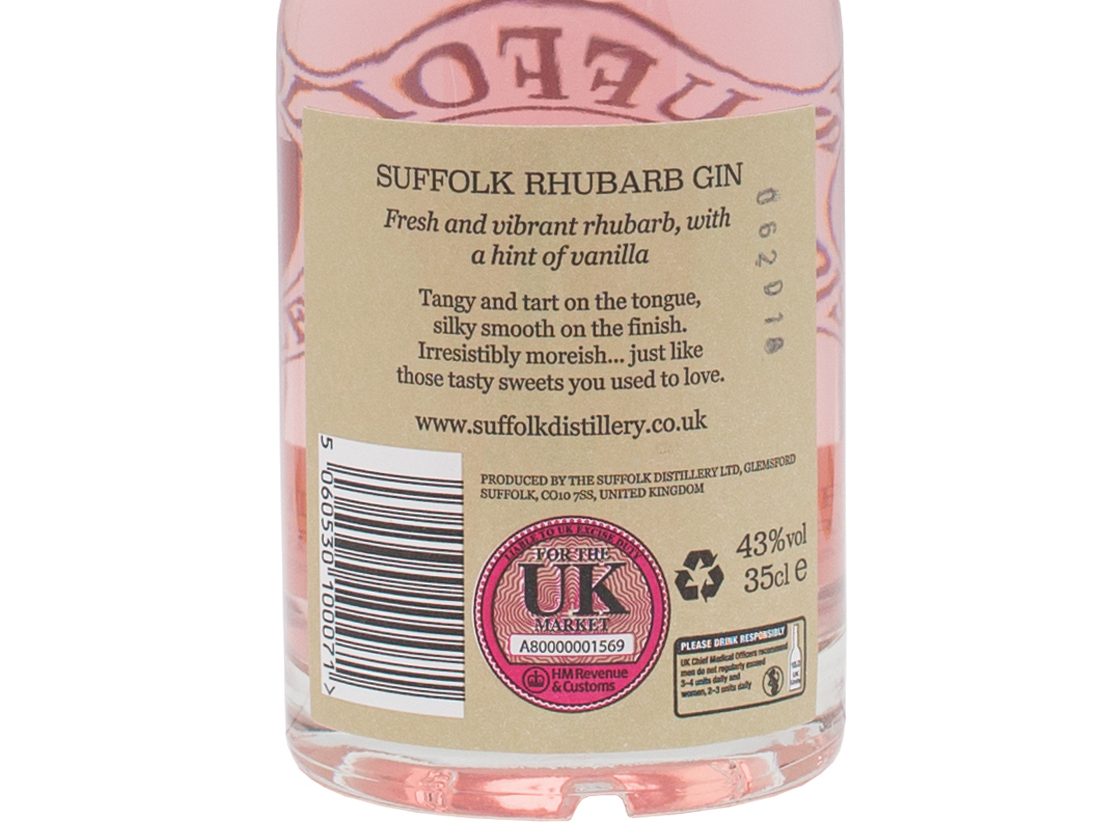
Warnings & Transparency of Ingredients
Consumers want ingredient transparency in all goods – even alcoholic beverages. Some countries have required health warnings on labels for decades. For example, in the US all alcoholic beverages must have a government warning. This trend of health consciousness is likely to continue in the future.
Individual countries within the EU decided their own policies regarding health warnings. There’s no legal requirement for health warnings on alcoholic drinks in the UK yet. However, many producers put warnings in place voluntarily, often on advice from the health body, the Department of Health. Similar labels are required for alcoholic beverages in Australia warning of the dangers of drinking while pregnant.
These trends reflect shifting attitudes toward alcohol and public health that affect how producers design and integrate labels.
Remember, manufacturers designing their labels must comply with the complex regulatory landscape. A compliance breach can result in steep penalties and a damaged reputation. Continual regulatory change in label design remains an important trend in the alcohol label industry.
Consumption Perceptions & Market Influence
In an increasingly fast-moving alcohol industry, understanding how label trends affect consumer perceptions and the market is critical.
Label Trends Influence Buying Decisions
Relevance goes beyond labels as tools of branding: they affect buying decisions. However, more than 60% of consumers cite label design as an important decision factor. For example, Neilsen research shows that consumers want labels that describe the heritage and authenticity of the product. These aesthetics in turn affect our impression of the product quality and value. Millennials in particular, who make up a large chunk of alcohol buyers are drawn to striking, narrative labels. As they market information, identity, and sentiment, spectacular designs tend to appeal to this demographic and influence their purchase intent.
The Power of Limited-Edition Labels
Special edition labels catch consumers’ eyes. They try to present ‘exclusive’ and ‘rare’. These labels have striking designs, premium materials and sometimes augmented technology. For example, Jack Daniel’s Annual Holiday Select bottles have distinctively detailed labels year after year that make consumers want to ‘buy now before stocks run out.’ It is the lure of limited availability paired with an appealing design and a promise of something different that makes limited-edition labels so powerful in attracting customers and driving sales. Authentic labels provide heritage appeal. Limited edition labels also have that special pull – they create exclusivity that drives sales.
For a rapidly evolving alcohol industry, label trends go beyond aesthetics. They’re a tool for influencing consumer behaviour and market dynamics. From bold typography to smart labels – each trend shapes consumer perceptions. Research shows that Design influences more than 60% of consumers when choosing a label, clearly, this is a very influential factor!
Conclusion
In the rapidly evolving world of alcoholic beverages, label trends are more than just aesthetics. They’re a powerful tool that influences consumer behaviour and drives market dynamics. As we’ve seen, from bold typography to smart labels, each trend plays a crucial role in shaping consumer perceptions. It’s evident that a label’s visual identity can make or break a product’s success.
Labels that resonate with authenticity and heritage hold immense appeal. Limited-edition labels, too, have a unique pull, creating a sense of exclusivity that boosts sales. As we navigate this fast-paced industry, understanding these trends and their impact on consumers is key. Marketers and brand owners need to keep on the pulse of these trends to ensure they are driving their brands and products in the right direction.

